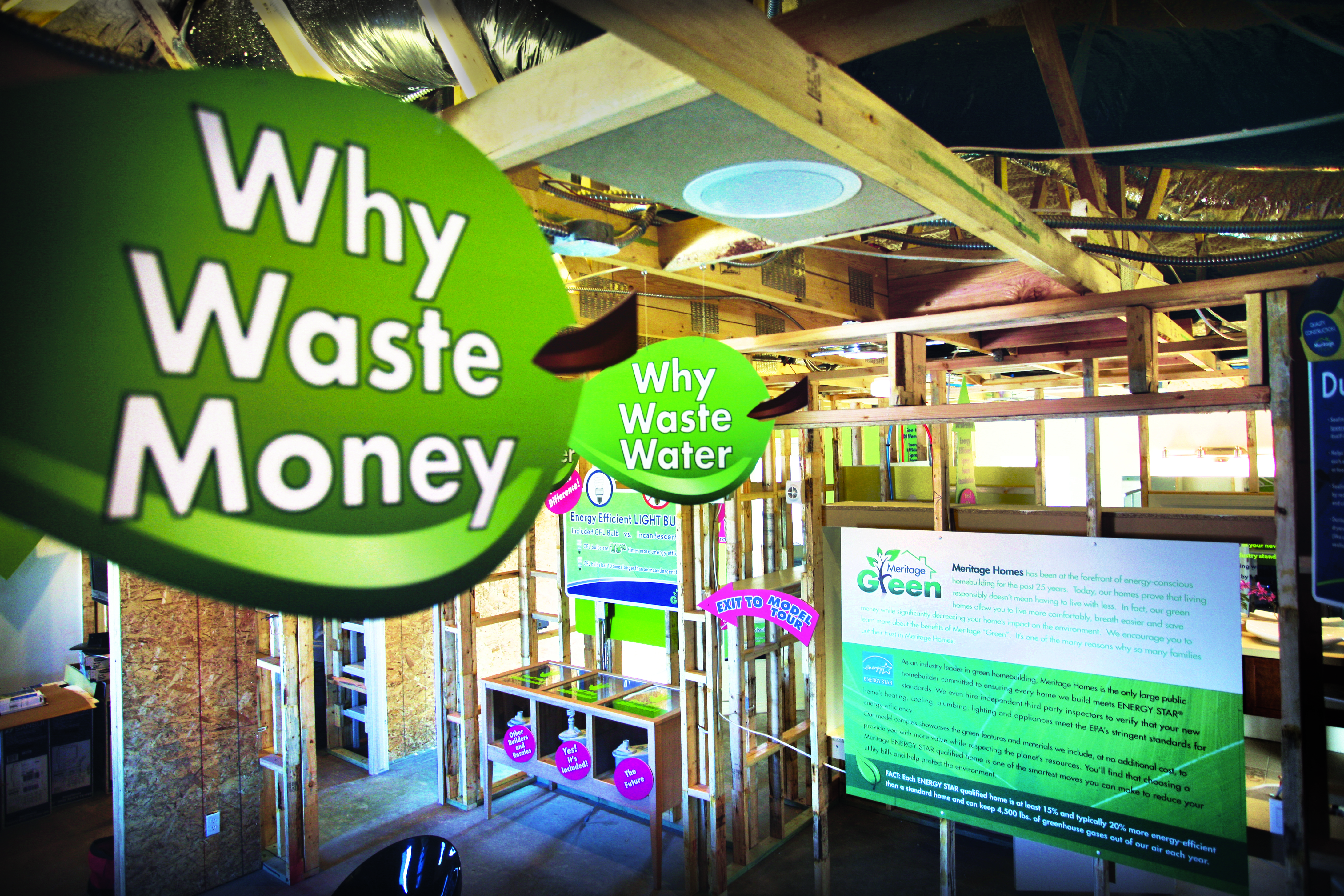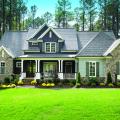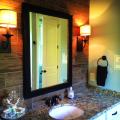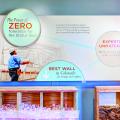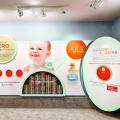When Meritage Homes first started offering green, or high-performance, homes, their sales associates worked hard to educate buyers about building science. They spoke knowledgeably about everything from SEER ratings of HVAC systems to R-factors of insulation. It was a big mistake, says C.R. Herro, the company’s vice president of environmental affairs.
“We did it all wrong,” Herro says. “It became apparent very quickly that people don’t buy houses on building science.”
What the sales associates found was that customers just wanted to know what building science would do for them.
“Instead of the normal features-based sale process, it’s a benefits-based sales process,” Herro says. “You talk about the benefits of living in a healthier home, a more comfortable home and cutting their power bills in half.”
Given how long green building practices and products have been around, it may be a head scratcher to some builders that they still need to explain to buyers why they should want—and pay a premium—for Energy Star appliances, WaterSense-certified faucets, spray foam insulation, or low-VOC carpeting and finishes.
Take the case of Pardee Homes. Even though the builder has been telling the story of green building since 1998, the year Britney Spears had her first hit record, they’re still telling it and not much has changed as far as the messages that capture home buyers’ attention.
“Energy was the core for the foundation of our program,” says Pardee vice president of marketing Joyce Mason. “It still needs to be the key of any program, I think … we almost have to do more education now than before. Even though people expect some energy efficiency, you still have to tell them what you do and why.”
KB Home, which builds all of its houses to Energy Star Version 3 standards, doesn’t use the word “green” in its marketing messages.
“Consumers get lost sometimes when you start talking about green,” says Dan Bridleman, KB’s senior vice president of sustainability, technology, and strategic sourcing. “It doesn’t resonate with the homebuyer. We like to think we can create a difference from a value point of view. As we think about a strategy for our sustainability efforts, we look at four categories—energy, water, a healthy home, and a smart home.”
People can’t buy what they don’t know is for sale
Many builders have a powerful marketing message to share because they use sustainable building practices, says Marla Esser, CGP, LEED AP, who has presented at the International Builders’ Show on marketing green building. They’re not, however, reaping the benefits because they don’t bring up the features with customers.
“We teach builders how to compare their projects to the National Green Building Standard certification program,” she says. “In every workshop we’ve done so far, at least a good percentage of the builders are already doing the things we’re talking about, but they’re not getting the credit for it because they’re not talking about it.”
Builders need to tell those kinds of stories to buyers because in general, very few people ask right off the bat for green features in a home. That’s a common complaint, says Esser, who owns a green building consultancy, Sustaining Spaces, in St. Louis, Mo. Builders tell her their buyers don’t ask for green.
“Well, buyers don’t ask for windows or insulation either,” she says. “It comes down to the builder or salesperson helping the buyer understand the value. Don’t get caught up in the tech jargon about R-24 insulation. Just show the buyer the house won’t have drafts. … People who are selling that way and incorporating it into their processes from the very beginning are the most successful with it.”
Educating real estate agents
Homebuyers aren’t the only ones who need to be educated on the value of green building practices. Real estate agents can be powerful allies if they’re armed with the necessary information to advocate on a builder’s behalf. Without the information, the only selling points they present are the ones they can see and touch.
Meritage Homes offers continuing education credit training classes for Realtors, explaining what proper energy-efficient homes can do. “If they don’t understand it, they shy away from it,” Herro says. “The course validates for them that it’s a good thing for their buyers, and it’s a good tool for them as Realtors to get more referrals.”
Real estate agents need builders to educate them as much as homebuyers do. Michele Desiderio, vice president of innovation services for Home Innovation Research Labs, recalls giving a seminar to a group of North Carolina builders, one of whom was excited to give her a tour of a spec house he built that was gold certified under the National Green Building Standard.
As she walked through the house, she noticed the information the builder left for a Realtor lying on the kitchen counter. It made no mention of the gold certification or any of the high-performance materials or processes that would give a buyer a healthier, more comfortable, and more cost-effective home.
The crucial role of signage
With so many builders today relying on real estate agents to show their houses, Desiderio says she encourages builders to use signage in their homes to connect the processes to the benefits.
“Even if a buyer is walking through the house without a sales agent, they can see the signs,” she says.
To make the value easy to understand, KB Home instituted an Energy Performance Guide, or EPG, that estimates the monthly energy costs and monthly savings over a typical resale home for every home it builds. Styled after the miles per gallon on a new car window sticker, the EPG is posted in each model and on the KB Home website, where an interactive tool lets shoppers see the savings by the month, the year, and over the life of the loan.
Homes By Dickerson, a custom home builder in Raleigh, N.C., makes good use of signage at every step in the process, starting with neighborhood signs. Their permit boxes say that they are an Energy Star partner and they post “Testing in Progress” signs in front of houses when certification tests are being performed. Buyers get copies of the certifications when they purchase their homes.
In their models, wall placards talk about the green features of their homes.
“It’s like going into a store,” says Peter Winkler, sales manager for the Briar Chapel community. “You see things and it prompts questions. It’s a chance to do it in a such a way that they can go at their own pace.”
Homes By Dickerson also posts the HERS rating of each home with the estimated operating costs. “With every potential buyer, I have an opportunity to work that into the conversation,” Winkler says. “We compare it to miles per gallon; they get it.”
The builder created infographics that can be shared on blogs and on social media sites. Those have also been a hit with Realtor socials and luncheons the company hosts in its design centers.
Winkler says that one of his biggest challenges in educating his buyers on green building is the proliferation of programs—there are five or six represented in the neighborhood in which he sells. Homes By Dickerson has chosen the National Green Building Standard and focuses its message on the HERS score. It’s a simple way to compare two houses, he says.
“We have HERS ratings in the 49 to 55 range versus a builder doing Energy Star,” he says. “They’re in the 70s and 80s. That’s good for them, but that additional 30 percent offers a lot of buying power.”
The HERS rating and the NGBS certification also provide credibility for the builder’s claims, Winkler says. “They’re reading articles about greenwashing,” he says. “I think some buyers are skeptical about whether or not we’re telling them something that’s true. That’s where third-party certification comes in handy.”
The importance of visual aids
Many builders use cut-away walls or floors to show buyers the science behind the drywall. As part of a Green Parade of Homes, Sarah Oudman, president of Treasure Homes Inc., in Burns Harbor, Ind., built the exterior of a house and left all the inside walls open.
“We realized that having a Green Parade wouldn’t look any different on the outside to people,” says Oudman, who builds all of her houses to Emerald Level, the highest level of NGBS certification. “They thought we really needed a place where we could show them inside the walls of the house.”
For several years, Denver’s New Town Builders has used an on-site “building science center” to explain the benefits of energy-efficient building. In its first iteration, it focused on building science. The current version is much different; it tells buyers how a durable, healthy home will affect their lives.
The company created the building science center, says vice president of home building operations Bill Rectanus, because “we weren’t 100-percent sure our salespeople were effectively telling the energy efficiency story. We wanted to give them a tool to tell it effectively.”
The building science center also gives buyers information about how energy-efficient construction reduces the operating cost of a house, including testimonials from happy homeowners.
“Those pack a pretty good punch,” Rectanus says.
The 2014 Grand Winner of the U.S. Department of Energy’s Housing Innovation Award also wanted to show that green houses are not all alike. They needed some visual tools to do that.
“I do think it’s accomplished that,” Rectanus says. “The feedback we get from buyers is that they didn’t grasp the depth of energy efficiency, but they got that we were the most energy-efficient, and we cared.”
New Town also has created an app that prospective buyers can download with a QR code. It gives them energy-saving tips for any home they live in and an interactive HERS scale that allows them to look at the industry-average amount of savings that could be had from a particular home.
“They can ask about a home’s HERS score and compare it with ours,” Rectanus says.
The power of events
Events have been a regular part of the marketing strategy at Homes By Dickerson. The builder has hosted “Hunt for Green” events with prizes to encourage Realtors and customers to visit and look for green features in the homes.
The builder also participates in Raleigh’s annual Green Home Tour and in the area’s Parade of Homes. “As people are roaming around the Triangle looking at various homes, only about 30 percent will be certified green,” Nowalk says. “We take that opportunity to showcase the difference.”
Herro has made the same commitment to event marketing for Meritage Homes. He speaks at national industry and Realtor conferences and teaches sustainable construction at universities. One particularly brilliant effort involved hosting field trips for grade school students at their model homes to show them how the things they’re learning at school about “reduce, reuse, recycle apply to make the world a better place,” Herro says.
Leveraging social media
KB Home has taken advantage of the immediacy of social media to capture buyers’ excitement over their savings on utility bills. A Facebook campaign asked buyers how much they saved and what they thought they’d do with the money.
“We got a lot of great responses,” Bridleman says. “Some people said they’d save it or invest it or set it aside for their child’s education.”
Pardee Homes also has made good use of Facebook; and it uses blogs to give buyers the more detailed information some of them are looking for.
“An ad is a way to get out general pieces of information, but you can’t go into depth,” Mason says. “PR stories are great but they’re gone when the paper is gone. Blogs are always there. We can refer to them when someone wants specific information and leverage information from other experts in the marketplace. It helps the buyer understand a complicated product.”
Inspire a better choice
Perhaps the hardest part of marketing green building for many builders is that once they start building this way, it becomes part of their standard operating procedures and they forget that most consumers know very little about it, if anything at all.
As buyers begin shopping for a new home, they will sort the choices first by location, price, home size, and style.
“That gets you to ‘good enough,’” Herro says. “Then people buy bedspreads and magnolia bushes. We want to inspire consumers to make the better choice.” PB


